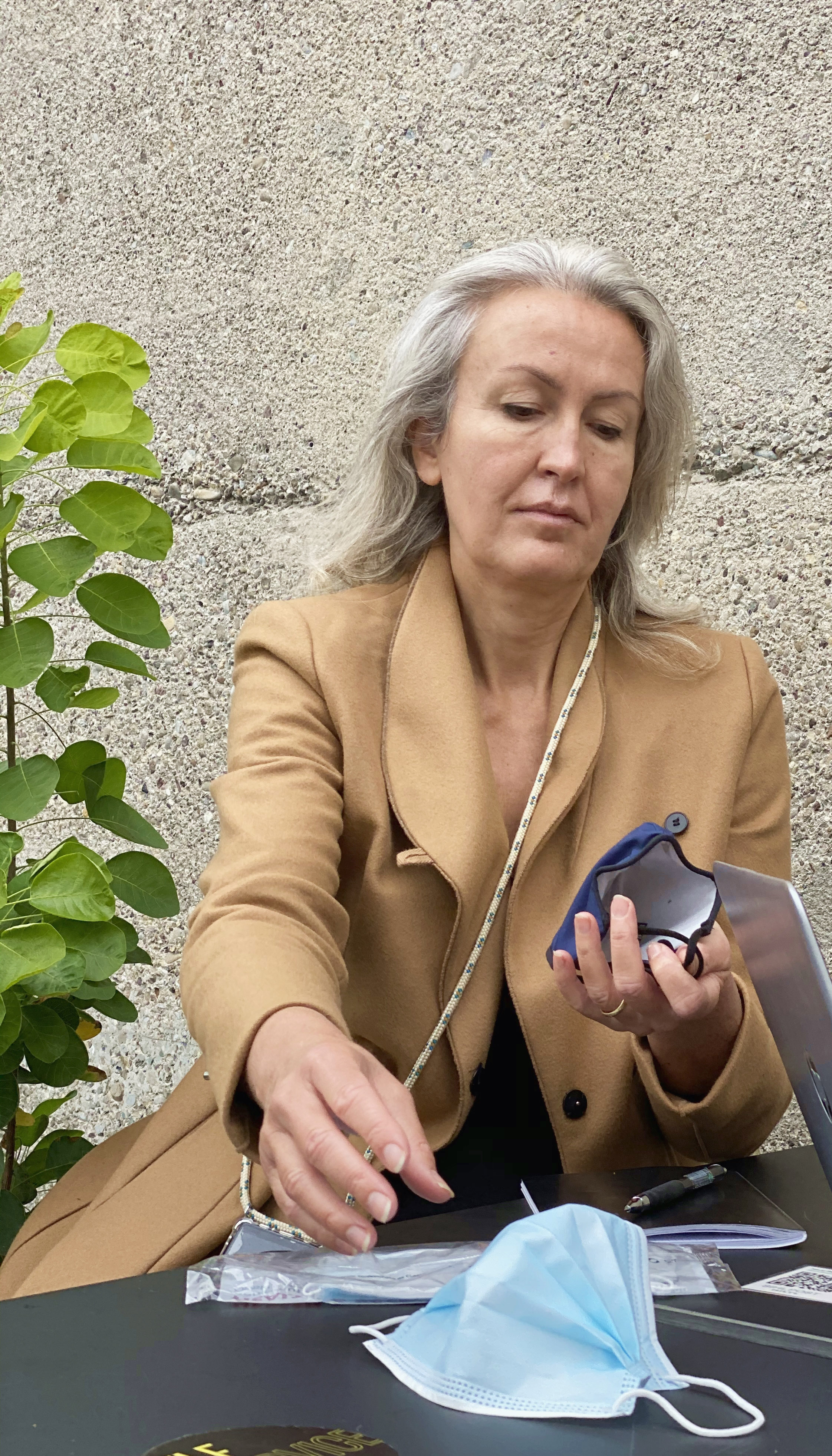13 masks per week
For an initial environmental assessment of masks, the researchers compared disposable surgical masks with fabric masks made of cotton. “This is a first, simple LCA, which enabled us to identify the relevant ecological factors,” says Claudia Som from Empa’s “Technology and Society” lab in St. Gallen, who coordinated the interdisciplinary study. “Our aim was to create a basis for optimizing sustainability right from the design stage”, she says.
The greenhouse gas balance, energy and water consumption as well as the overall environmental impact (expressed in so-called environmental impact points, UBP) of the production, use and disposal of the masks were calculated for a person who uses public transport to commute to work on a daily basis and who makes three purchases per week. Based on the recommendations of the “Swiss National COVID-19 Science Task Force” (www.ncs-tf.ch), this person uses either two community masks per week, which are washed at 60°C after use and disposed of after five washing cycles, or 13 disposable polypropylene surgical masks.
Decisive: the useful life of textile masks
The analyses show that cotton fabric masks perform better than surgical masks in terms of energy consumption and greenhouse gas balance. In contrast, the surgical mask performs better than its cotton counterpart in terms of water consumption and overall environmental impact. “The reason for this is the unsustainable, resource-intensive production of cotton,” says Empa researcher Roland Hischier.
The data the researchers used were based on an assumed global average cotton production, whose water consumption is enormously high due to irrigation, fertilization and pesticide use for cotton. “If production were to be based on regions with a high proportion of rain irrigation and on organic cotton or even on recycled cotton, the so-called water footprint of cotton masks would probably look much better,” says Hischier.
Washing the fabric masks, on the other hand, is hardly significant compared to their production. “This means that the strongest leverage is in the service life of the textile masks, since the greatest part of the environmental impact is caused by the production of these masks”.
Improvements for design
n a second step, the researchers carried out a sensitivity analysis to analyze the effects of various options in mask design that could reduce the environmental impact. It was found that the lifetime of the fabric masks has the greatest influence. Above a washing frequency of about 20 washes, cotton fabric masks not only lead in terms of energy consumption and greenhouse gas balance, but also in terms of overall environmental impact. “There are manufacturers that already allow 20 or more wash cycles per mask,” says Melanie Schmutz, lead author of the study.
Other factors that were investigated were weight and wash temperature. In terms of weight, it was found that even a reduction to around nine grams – instead of twelve grams as in the original analysis – leads to a further significant reduction in environmental impact. On the other hand, a reduction in washing temperatures, for example from 60 to 40 or 30 degrees, hardly affects the environmental impact.
Some of the fabric masks certified in accordance with the requirements of the Swiss National COVID-19 Science Task Force are made of other materials, for example polyester, which will have a different impact on the environment compared to cotton. This first life cycle assessment study cannot yet make any statements about these masks.
Eco-littering and compostable disposable masks
In future, the Empa team also intends to investigate the environmental impact of masks through littering and whether compostable disposable masks would be a solution. Photo: Empa
As a next step, the researchers want to include additional factors in their LCAs, such as further materials for textile masks, antiviral and/or antibacterial coatings that could increase the wearing time between washes, which can greatly improve their environmental sustainability, or packaging, which has a different significance for individually sold surgical masks than for bulk packaging.
“Another often discussed issue is the environmental pollution caused by incorrectly disposed masks,” says Empa researcher Som. The aim is to find out whether these entries into the environment are really relevant, and whether bio-compostable masks could help reduce environmental pollution. And all this must take into account the fact that the masks must be able to do one thing above all else: effectively stop the transmission of viruses.


